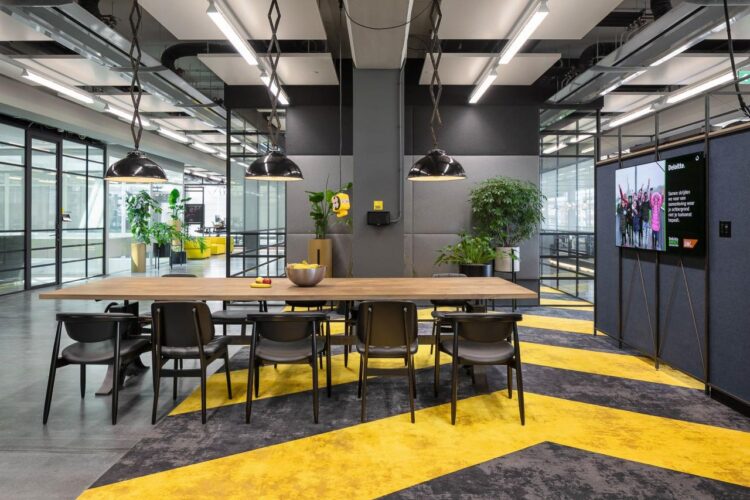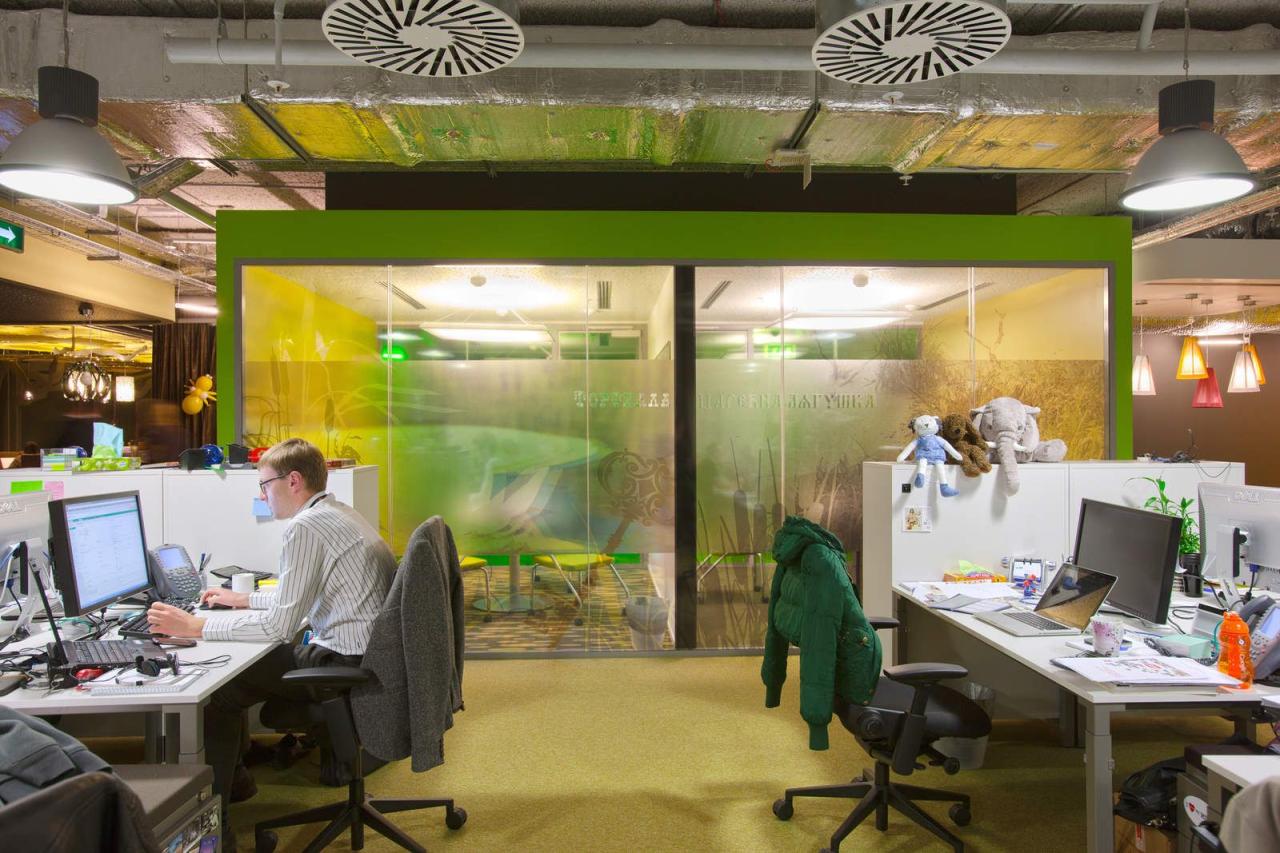The way we work has undergone a seismic shift, particularly over the past few years. The traditional office, once the undisputed epicenter of productivity, has evolved into a dynamic, distributed concept. At the heart of this transformation lies the digital workspace, a virtual environment that empowers individuals and teams to collaborate, communicate, and create seamlessly, regardless of their physical location. This isn’t just about remote work; it’s a fundamental reimagining of how work gets done, driven by advanced technologies that redefine productivity, foster unprecedented flexibility, and unlock new avenues for innovation. The digital workspace is no longer a luxury but a strategic imperative, shaping the future of how businesses operate and how people engage with their work.
From Cubicles to Cloud: The Work Environment’s Journey
To truly appreciate the current state and future trajectory of the digital workspace, it’s essential to understand the historical evolution of work environments and the catalysts that have spurred this profound change.
A. The Traditional Office: A Centralized Hub
For centuries, the concept of a centralized physical workspace dominated. From early factories to modern corporate high-rises, the office served as the single point of congregation for employees.
- Fixed Locations and Commuting: Workers were expected to physically commute to a designated office location daily, often facing long travel times and rigid schedules.
- Physical Infrastructure Reliance: Productivity was heavily dependent on on-site infrastructure: desktop computers, wired networks, physical servers, and in-person meetings.
- Limited Flexibility: Work hours and locations were largely inflexible, making it challenging to accommodate diverse employee needs, personal commitments, or unexpected disruptions.
- Information Silos: Information often resided in physical filing cabinets, individual computers, or departmental networks, making sharing and collaboration across teams cumbersome.
- Geographical Constraints: Talent acquisition was limited by geographical proximity, making it difficult to hire the best candidates regardless of where they lived.
B. The Rise of Remote Work and Distributed Teams
The turn of the millennium, fueled by advancements in internet connectivity and mobile technology, slowly paved the way for remote work. However, recent global events acted as an accelerant, pushing it into the mainstream.
- Early Telecommuting: Initial forays into remote work focused on basic telecommuting, often leveraging VPNs for secure access to company networks. This was more about individual flexibility than widespread collaboration.
- Growth of Cloud Services: The advent of cloud computing dramatically reduced the reliance on on-premise infrastructure. Cloud-based applications (SaaS) made it easier to access tools from anywhere.
- Improved Connectivity: Widespread broadband internet and later 4G/5G mobile networks provided the necessary bandwidth for real-time online collaboration, video conferencing, and cloud access.
- The Pandemic’s Acceleration: The global events of 2020 served as an unprecedented catalyst, forcing virtually every business capable of remote operation to adopt it overnight. This stress-tested and rapidly matured remote work technologies and practices.
- Hybrid Work Models: The post-pandemic era has seen the emergence of hybrid work, where employees split their time between the office and remote locations, demanding flexible digital solutions that bridge both environments.
This rapid adoption highlighted the immense potential of digital workspaces, moving beyond mere remote access to a truly integrated, virtual work ecosystem.
Core Components of a Modern Digital Workspace
A robust digital workspace is not a single product but a cohesive ecosystem of interconnected technologies and practices designed to empower modern work.
A. Unified Communication and Collaboration Platforms
At the heart of any effective digital workspace are tools that facilitate seamless communication and collaboration, bridging geographical distances.
- Video Conferencing: Essential for virtual meetings, team stand-ups, and client interactions (e.g., Zoom, Microsoft Teams, Google Meet). High-quality video and audio are paramount.
- Instant Messaging and Chat: For quick questions, informal discussions, and persistent team channels (e.g., Slack, Microsoft Teams chat).
- Shared Document Creation and Editing: Real-time co-authoring of documents, spreadsheets, and presentations (e.g., Google Workspace, Microsoft 365, Confluence).
- Project Management Tools: Platforms to track tasks, manage workflows, assign responsibilities, and monitor progress (e.g., Asana, Trello, Jira, Monday.com).
These tools enable teams to work together as if they were in the same room, maintaining flow and connectivity.
B. Cloud-Based Productivity Applications (SaaS)
The move to Software as a Service (SaaS) applications is a cornerstone of the digital workspace, providing ubiquitous access to critical tools.
- Office Suites: Cloud-native versions of word processors, spreadsheets, and presentation software accessible from any device (e.g., Google Workspace, Microsoft 365).
- CRM and ERP Systems: Cloud-based customer relationship management (CRM) and enterprise resource planning (ERP) systems (e.g., Salesforce, SAP S/4HANA Cloud) provide unified access to business data and processes.
- Specialized Business Applications: Industry-specific SaaS tools for design, finance, marketing, human resources, etc., all accessible remotely.
- Automated Workflows: Tools that automate repetitive tasks, data entry, and approval processes, integrating various applications (e.g., Zapier, Microsoft Power Automate).
SaaS reduces IT overhead, ensures software is always up-to-date, and enables true anywhere-anytime access.
C. Secure Cloud Storage and File Sharing
Centralized, secure cloud storage is essential for ensuring data accessibility and integrity for distributed teams.
- Centralized Repositories: Cloud storage services (e.g., Google Drive, OneDrive, Dropbox Business, Box) act as single, secure repositories for all company documents and files.
- Version Control: Automatic versioning of documents prevents data loss and allows easy rollback to previous states.
- Granular Access Control: Robust permissions and sharing controls ensure that only authorized individuals can access or modify sensitive information.
- Data Loss Prevention (DLP): Security measures to prevent sensitive data from leaving the controlled environment.
This eliminates the need for local file servers and ensures everyone is working on the most current version of a document.
D. Identity and Access Management (IAM)
Robust security is paramount in a distributed environment. IAM solutions are critical for managing who can access what, from where, and on which device.
- Single Sign-On (SSO): Allows users to log in once with one set of credentials to access all authorized applications, improving user experience and security.
- Multi-Factor Authentication (MFA): Adds an extra layer of security by requiring multiple forms of verification (e.g., password + mobile app code) for login.
- Role-Based Access Control (RBAC): Assigns permissions based on a user’s role within the organization, ensuring least privilege access.
- Conditional Access: Policies that enforce stricter access requirements based on context (e.g., device health, location, network).
E. Endpoint Management and Security
Managing and securing a diverse array of devices (laptops, tablets, smartphones) used by employees is a key component.
- Mobile Device Management (MDM) / Unified Endpoint Management (UEM): Tools to configure, manage, and secure employee devices, enforce policies, and remotely wipe data if a device is lost or stolen.
- Endpoint Detection and Response (EDR): Security solutions that continuously monitor endpoint devices for malicious activity and provide capabilities for quick threat response.
- Virtual Desktop Infrastructure (VDI) / Desktop as a Service (DaaS): Providing remote access to virtualized desktop environments, ensuring a consistent and secure workspace regardless of the user’s physical device.
F. Digital Adoption Platforms (DAPs) and Training
As the digital workspace grows in complexity, tools that facilitate user adoption and continuous learning become crucial.
- In-App Guidance: Walkthroughs and tooltips that guide users through new features or processes within applications.
- Centralized Knowledge Bases: Self-service portals where employees can find answers to common questions and access training materials.
- Analytics: Tracking how employees use digital tools to identify areas where more training or better features are needed.
Transformative Advantages of the Digital Workspace
The embrace of a well-designed digital workspace offers a multitude of strategic advantages that extend far beyond simply enabling remote work. It fundamentally redefines productivity and organizational capability.
A. Enhanced Flexibility and Work-Life Balance
Perhaps the most immediately recognized benefit, the digital workspace provides unparalleled flexibility in where and when work can be done.
- Location Independence: Employees can work effectively from home, a co-working space, or even different cities, breaking down geographical barriers.
- Asynchronous Work: Tools support work across different time zones, allowing teams to be productive even when not online simultaneously, fostering global collaboration.
- Improved Work-Life Balance: This flexibility empowers employees to better integrate work with personal commitments, reducing stress and potentially increasing job satisfaction and retention.
- Talent Pool Expansion: Businesses are no longer limited to hiring talent within commuting distance, opening access to a global pool of skilled professionals, leading to stronger, more diverse teams.
B. Significant Cost Savings and Operational Efficiency
Moving from a traditional office-centric model to a digital workspace can lead to substantial financial benefits and streamlined operations.
- Reduced Real Estate Costs: With fewer employees requiring dedicated office space, organizations can downsize their physical footprint, leading to significant savings on rent, utilities, and office maintenance.
- Lower Commuting Expenses: Employees save on commuting costs (fuel, public transport, vehicle wear-and-tear), which can be a valuable perk.
- Optimized IT Infrastructure: Shifting to cloud-based SaaS applications often reduces the need for expensive on-premise hardware, IT staff for maintenance, and energy consumption associated with data centers.
- Streamlined Workflows: Automation tools within the digital workspace can eliminate manual, repetitive tasks, freeing up employees to focus on higher-value work and improving overall operational efficiency.
C. Increased Productivity and Collaboration
Despite initial concerns, a well-implemented digital workspace can actually boost productivity and enhance collaborative efforts.
- Minimized Distractions (Potentially): For many, a remote setup offers fewer office distractions, allowing for more focused, deep work.
- Access to Best Tools: Employees have immediate access to cutting-edge collaboration and productivity tools, enabling them to perform tasks more efficiently.
- Enhanced Information Sharing: Centralized cloud storage and collaboration platforms break down silos, making information easily discoverable and sharable across teams and departments.
- Seamless Collaboration: Real-time co-editing, persistent chat channels, and video conferencing facilitate continuous communication and quick problem-solving, regardless of location.
- Faster Decision Making: Accessible data and communication tools allow for quicker access to information and faster consensus-building among distributed stakeholders.
D. Enhanced Business Resilience and Continuity
The digital workspace significantly strengthens an organization’s ability to withstand disruptions and maintain operations.
- Disaster Preparedness: Businesses are no longer vulnerable to localized disruptions (e.g., natural disasters, power outages, local emergencies) that would cripple a centralized office. Work can seamlessly continue from anywhere.
- Scalable Operations: Cloud-based infrastructures supporting digital workspaces can scale up or down rapidly to accommodate changing business needs, workforce size, or unforeseen events.
- Business Continuity: In the face of unexpected crises, the infrastructure for remote work is already in place, allowing for uninterrupted operations and minimal downtime.
E. Improved Employee Engagement and Well-being
Beyond mere efficiency, the digital workspace can positively impact employee morale and overall well-being.
- Autonomy and Empowerment: Giving employees more control over their work environment and schedule can lead to increased job satisfaction and a sense of empowerment.
- Reduced Stress: Eliminating commutes and providing flexibility can reduce daily stressors, contributing to better mental and physical health.
- Inclusivity: Digital workspaces can better accommodate employees with disabilities, those in remote geographical areas, or individuals with caregiving responsibilities, fostering a more inclusive work environment.
- Learning and Development: Integrated digital learning platforms provide continuous opportunities for skill development, keeping employees engaged and up-to-date.
Challenges and Considerations in Digital Workspace Implementation
While the benefits are compelling, successfully implementing and managing a digital workspace is not without its complexities and requires careful strategic planning.
A. Cybersecurity Risks and Data Protection
The distributed nature of the digital workspace significantly expands the attack surface, making cybersecurity a primary concern.
- Endpoint Security: Securing a multitude of personal and company-owned devices outside the traditional network perimeter is challenging. Each device becomes a potential entry point for threats.
- Network Vulnerabilities: Employees working from less secure home networks (e.g., public Wi-Fi) can expose company data to risks.
- Phishing and Social Engineering: Remote workers may be more susceptible to phishing attempts without the immediate presence of IT support or in-person cues.
- Data Residency and Compliance: Ensuring data sovereignty and compliance with regulations like GDPR, HIPAA, or local data protection laws becomes more complex when data is accessed and stored across various locations and cloud services.
- Shadow IT: Employees using unauthorized personal cloud services for work can create security blind spots.
B. Maintaining Company Culture and Employee Engagement
While flexibility is a boon, fostering a cohesive and positive company culture can be harder in a largely digital environment.
- Reduced Social Interaction: Lack of informal ‘water cooler’ conversations can lead to feelings of isolation, reduce spontaneous collaboration, and weaken interpersonal bonds.
- Onboarding Challenges: Integrating new hires into the company culture and connecting them with colleagues can be more difficult remotely.
- Work-Life Boundary Blurring: The absence of a physical separation between work and home can lead to burnout, overwork, and a blurring of personal and professional boundaries.
- Equity and Inclusion Concerns: Ensuring all employees, regardless of their work location or access to technology, feel equally valued, included, and have opportunities for advancement is critical.
C. Technological Integration and Complexity
Building a seamless digital workspace involves integrating numerous disparate technologies, which can be complex.
- Tool Sprawl: Organizations often end up with a multitude of overlapping tools for communication, collaboration, and project management, leading to confusion, inefficiency, and wasted subscriptions.
- Interoperability: Ensuring that different applications and platforms can communicate and share data effectively is a significant integration challenge.
- Network Latency and Bandwidth: Remote workers may experience connectivity issues, slow application performance, or difficulties with video conferencing if home internet is unreliable or insufficient.
- IT Support Challenges: Providing effective IT support to a geographically dispersed workforce, troubleshooting hardware issues, or resolving software problems remotely requires specialized tools and processes.
D. Ensuring Digital Equity and Access
Not all employees have equal access to robust home internet, suitable workspaces, or ergonomic equipment.
- Internet Access: Reliable high-speed internet is not universally available or affordable for all employees.
- Home Environment: Some employees may lack a quiet, dedicated home office space, leading to distractions and discomfort.
- Equipment Disparities: Ensuring all employees have ergonomic setups, reliable hardware, and necessary peripherals can be a logistical and financial challenge for employers.
E. Performance Management and Trust
Managing employee performance in a remote or hybrid environment requires a shift in management styles.
- Shift to Output-Based Management: Focus needs to move from ‘time spent in office’ to measurable outcomes and deliverables.
- Building Trust: Managers need to build trust with remote teams and avoid micromanagement, empowering employees to manage their own time and tasks.
- Monitoring and Metrics: While monitoring tools exist, striking a balance between oversight and respecting employee privacy is crucial.
Best Practices for Maximizing the Digital Workspace’s Potential
Successfully leveraging the digital workspace requires more than just adopting new tools; it demands a holistic strategy encompassing technology, culture, and operational processes.
A. Develop a Comprehensive Digital Workspace Strategy
Before implementing any tools, craft a clear, overarching digital workspace strategy. This should align with business objectives, define the desired employee experience, identify key technologies, outline security protocols, and plan for cultural shifts. This strategy should be dynamic and evolve with business needs and technological advancements.
B. Invest in a Unified and Integrated Tech Stack
Avoid ‘tool sprawl’ by selecting a unified and integrated technology stack. Prioritize platforms that offer comprehensive communication, collaboration, and productivity features (e.g., Microsoft 365/Teams, Google Workspace) and ensure that specialized applications can seamlessly integrate. This reduces complexity for users and IT, and improves data flow.
C. Prioritize Robust Cybersecurity and Data Governance
Make cybersecurity and data protection the cornerstone of your digital workspace. This includes:
- Zero Trust Architecture: Implement a Zero Trust model where no user or device is trusted by default, requiring continuous verification.
- Strong IAM and MFA: Enforce Multi-Factor Authentication (MFA) for all access points and implement granular, role-based access controls.
- Endpoint Security: Deploy Unified Endpoint Management (UEM) solutions and Endpoint Detection and Response (EDR) tools across all devices.
- Data Loss Prevention (DLP): Use DLP policies to monitor and control sensitive information.
- Security Training: Conduct regular cybersecurity awareness training for all employees, emphasizing phishing prevention, secure Wi-Fi use, and data handling best practices.
D. Foster a Culture of Trust, Transparency, and Empathy
Technology alone isn’t enough. Cultivate a company culture that values trust, transparency, and empathy.
- Empower Employees: Give employees autonomy over their work schedules and methods, focusing on outcomes rather than presence.
- Transparent Communication: Over-communicate through various channels (video announcements, company-wide chats, regular newsletters) to keep everyone informed and connected.
- Empathetic Leadership: Train managers to lead distributed teams effectively, focusing on employee well-being, recognizing burnout signs, and fostering psychological safety.
- Virtual Socialization: Organize virtual team-building activities, informal coffee breaks, and online social events to foster connections and combat isolation.
E. Provide Comprehensive Employee Support and Training
Ensure employees have the resources they need to thrive in the digital workspace.
- Robust IT Support: Provide easily accessible and responsive remote IT support channels for technical issues.
- Digital Literacy Training: Offer continuous training on new tools, best practices for online collaboration, and digital etiquette.
- Ergonomic Guidance: Provide advice and, where possible, support for ergonomic home office setups to prevent health issues.
- Mental Health Resources: Offer access to mental health resources and support programs to address potential challenges like isolation or burnout.
F. Implement Performance-Based Management and Clear Expectations
Shift away from ‘presenteeism’ to a focus on results.
- Define Clear KPIs: Establish clear, measurable Key Performance Indicators (KPIs) and objectives for individuals and teams.
- Regular Check-ins: Managers should conduct regular one-on-one check-ins to discuss progress, provide feedback, and address challenges.
- Outcome-Oriented Culture: Evaluate employees based on their contributions and outcomes, not on the hours spent online or physical presence.
G. Optimize for Hybrid Work Scenarios
With hybrid work becoming the norm, ensure the digital workspace seamlessly supports both in-office and remote employees.
- Equitable Meeting Experiences: Invest in meeting room technology that provides a great experience for both in-person and remote participants (e.g., smart cameras, high-quality audio).
- Shared Resources: Ensure all shared documents and tools are cloud-based and equally accessible to everyone.
- Flexible Scheduling: Support flexible schedules that allow employees to choose when to be in the office for collaborative sessions and when to work remotely for focused tasks.
The Future Trajectory of the Digital Workspace
The digital workspace is not a static concept; it’s continuously evolving, driven by new technological advancements and changing societal demands. Several key trends are poised to shape its future.
A. Hyper-Personalization and Adaptive Workflows
The future digital workspace will be increasingly hyper-personalized and adaptive. AI and machine learning will learn individual work patterns, preferences, and roles to:
- Tailored Interfaces: Present personalized dashboards, relevant information, and optimized workflows for each user.
- Intelligent Task Automation: Proactively automate more complex tasks, suggest next steps, and prioritize notifications based on user context and project deadlines.
- Adaptive Learning Paths: Suggest personalized training and development resources based on skill gaps and career goals.
- AI-Powered Assistants: More sophisticated AI assistants that can not only schedule meetings but also draft emails, summarize documents, and even participate in discussions.
B. Immersive Collaboration with VR/AR and Metaverse Integration
Collaboration will move beyond 2D video calls into more immersive, spatially aware environments.
- Virtual Meeting Spaces: VR and AR technologies will create realistic virtual meeting rooms where remote participants can interact as if they were physically present, using avatars.
- Digital Twins of Workspaces: Creating virtual replicas of physical offices or factories to facilitate remote tours, training, and real-time monitoring of operations from anywhere.
- Metaverse Work Experiences: Exploration of persistent, shared virtual environments (metaverse) for collaboration, creative work, and social interaction, potentially redefining the concept of a ‘virtual office.’
C. Enhanced AI for Productivity and Decision Support
Artificial Intelligence will become even more embedded within core productivity tools, acting as an intelligent co-pilot.
- Automated Content Generation: AI will assist in drafting reports, presentations, and code snippets, accelerating content creation.
- Advanced Analytics for Workflow Optimization: AI will analyze team workflows, identify bottlenecks, and suggest optimal pathways for project completion.
- Intelligent Information Retrieval: AI-powered search and knowledge management systems will surface relevant information faster and more intelligently from vast enterprise data.
- Sentiment Analysis in Communication: AI might analyze communication patterns to gauge team sentiment or identify potential conflicts, offering proactive interventions (with privacy considerations).
D. Seamless Security and Privacy by Design
As digital workspaces expand, security and privacy will become even more integrated and seamless, often becoming invisible to the end-user.
- Context-Aware Security: Security systems will dynamically adapt based on user behavior, device context, and network environment, providing invisible yet robust protection.
- Self-Healing Endpoints: Devices that can detect and automatically remediate security threats without user intervention.
- Zero-Knowledge Architecture: Increased adoption of privacy-preserving technologies where data is encrypted and processed in ways that prevent even the service provider from accessing raw sensitive information.
- Ethical AI and Data Governance: Stronger frameworks and regulations for the ethical use of AI and the governance of data collected within the digital workspace.
E. Sustainability and Green IT in the Digital Workspace
The environmental impact of digital operations will become a more significant design consideration.
- Energy-Efficient Cloud Infrastructure: Cloud providers will continue to innovate in sustainable data centers, directly impacting the carbon footprint of digital workspaces.
- Optimized Resource Usage: Tools will help optimize cloud resource consumption, reducing energy waste.
- Reduced Travel and Commuting: The continued prevalence of remote and hybrid work will significantly reduce business travel and daily commutes, contributing to lower carbon emissions.
Conclusion
The digital workspace has transcended its initial role as a temporary solution for remote work and has firmly established itself as the indispensable blueprint for modern productivity. It is a powerful, interconnected ecosystem of technologies that empowers individuals and teams to overcome geographical barriers, enhance collaboration, and redefine their approach to work. This evolution is driven by a quest for greater flexibility, unprecedented efficiency, and stronger business resilience.
While the journey towards a fully optimized digital workspace presents challenges—particularly concerning cybersecurity, cultural integration, and technological complexity—the immense benefits far outweigh these hurdles. By strategically investing in a unified tech stack, prioritizing robust security, fostering a culture of trust and empathy, and providing comprehensive employee support, organizations can unlock the full potential of this transformative paradigm. As AI, immersive technologies, and hyper-personalization continue to advance, the digital workspace will only become more sophisticated, intuitive, and seamlessly integrated into our professional lives. It’s not just about where we work, but how intelligently, collaboratively, and productively we can work, shaping the very future of human enterprise.











